While other industries are pummeled by the economic slump, mass transportation by metros experiences growth that is not unexpected. A&S reveals why.
While other industries are pummeled by the economic slump, mass transportation by metros experiences growth that is not unexpected. A&S reveals why.
Globally, from increased ridership to funding, the recession and green movements have caused governments and citizens alike to turn their attention to metros. In 2008, the New York City Transit hit a record of 2.37 billion rides on subways and buses.
Transport for London has invested US$3.3 million in railways across the U.K., said Niall Jenkins, Market Analyst, IMS Research.
Metro security holds great market potential. "The global annual metro-rail transportation security market is currently estimated at between $950 million and $1.25 billion," said Tom Thornton, Segment Leader of Critical Infrastructure Protection Team, Honeywell Automation Control Solutions.
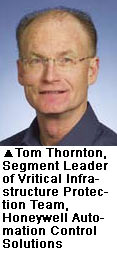 Safety, Security and Operations
Safety, Security and Operations
Terrorist threats and explosions are a top priority. However, civilian safety costs from train-related injuries, vandalism, suicides and fraudulent claims make up most expenses and damages. Estimates from the "Train Accidents Involving Pedestrians, Motor Vehicles and Motorcycles" report indicate U.S. train-related injuries exceed $300 million annually.
For complete coverage of all areas, including the stations and metro infrastructure, three issues need to be addressed — cameras must have clear line-of-sight and proper illumination; emergency equipment and help points need to be visible and easy to access; and the solution should be able to withstand harsh environmental conditions.

Help points should be coupled with video and audio recording systems for initial assessment of the emergency reported, as well as tracking of the caller. "Furthermore, metro conditions require equipment to withstand high vibration and electrically unstable environments that are typical of today's transit vehicles," said Paul Bentz, Product Sales Manager, GE Security.
Transportation is one of the largest applications for IP video surveillance, said Parul Oswal, Industry Analyst, RFID and Security, Frost & Sullivan. The inner workings of metro systems need to be mobile, reduce manpower and be interoperable with other systems to streamline management operations.
Detecting a Blind Spot

As many cameras watch stations, trains are the primary "blind spot," said Christopher Crawford, Director of Network Solutions, Bombardier Transportation. Due to budgets, onboard surveillance has seen limited deployment.
However, the price of mobile surveillance is lower and cameras are needed for fraudulent insurance claims and intelligent passenger management. The global mobile video surveillance equipment market was estimated to be worth $375.4 million in 2008, Jenkins said.
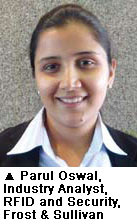
"Mobile surveillance increases ridership, aids in criminal prosecution, eliminates vandalism, and drives down insurance claims, helping to deliver ROI," Bentz said.
"Onboard, passengers are more vulnerable because there is no escape, so the surveillance challenge in the train is considerably more significant than in other parts of a metro system," said Dror Heller, VP of R&D, SerVision.

Transmission
Bandwidth issues and cost prohibit most deployments from allowing constant and real-time monitoring. The most common method of transferring and analyzing video data is to manually extract video footage from a removable hard disk. Wireless uploading by WLAN at depots or stations is an alternative; with automatic encrypted transmission of event-related live and recorded images when traveling is achievable, said Frank Pedersen, CEO of Security Solutions, Siemens Building Technologies.
Communication
As there are no means of exiting a train in motion, communication between the train and the outside world can be challenging. One way of solving this is to use two-way audio systems that can activate loudspeakers positioned inside the train, Heller said.
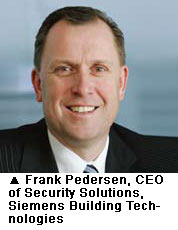
A number of metro lines do not have onboard surveillance or need to modernize their fleets, but new vehicles come equipped with onboard surveillance, Pedersen said.
Minimizing Manpower
With thousands of pivotal places — escalators, platforms, entrances, trains and so on —it is too expensive to hire the necessary manpower for 24-hour monitoring. Automatic pinpointing of suspicious activity using video analytics frees personnel from hours of tedious video review, said Roni Klein, VP of Sales for Video Solutions APAC, Verint Systems.
Within the global mobile surveillance growth, analytics
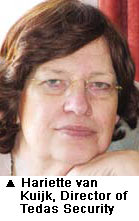
is expected to make up a significant portion, particularly for applications with transit buses, trains and trams, said Marc Holtenhoff, CEO of Aimetis.
Video analytics can detect the arrival of a train to a station and display in the control center video streams of the relevant platforms. "This keeps security operators constantly updated on train schedules and reduces
operational overhead," Udi Segall, Senior Product Marketing Manager, Nice Systems said.
Overcrowded platforms can present significant passenger safety challenges.
Crowd density analytics alert metro personnel to dangerous situations during
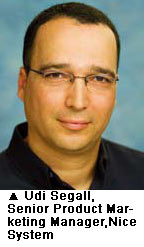
peak times. "Transitpersonnel have immediate access to this information and can perhaps, make the necessary schedule changes to increase passenger flow," said Ed Troha, Managing Director of Global Marketing, ObjectVideo.
Smart Video
A major problem is people stepping onto tracks, either to cross, plant explosives or end their lives. Analytics using motion tracking can be deployed to detect this, covering tunnels and other restricted sections to monitor vandals and loiterers, Jenkins said.
For an operational bonus, analytics can be integrated with an audio system to announce when people are too close to the track. This is useful for preventing graffiti and reduces the cost of vandalism, Holtenhoff said.
Analytics can take 2-D video footage and create a 3-D model for more perspective, 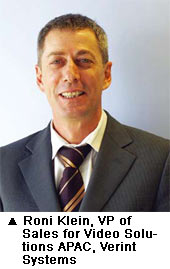 such as the object's real size, speed, direction and distance, said Greg Mendeleev, Senior Sales Director for EMEA, ioimage. After digesting this information, analytics can make "smart" decisions, accurately separating a person from other moving objects which could create false alarms such as for the train itself.
such as the object's real size, speed, direction and distance, said Greg Mendeleev, Senior Sales Director for EMEA, ioimage. After digesting this information, analytics can make "smart" decisions, accurately separating a person from other moving objects which could create false alarms such as for the train itself.
Intelligent video can watch for abandoned luggage at stations. Assuming that all requirements are met — for camera placement, angle, light and resolution — analytics can "memorize" the stationary background, only triggering alerts for new objects introduced to the scene, Troha said. With crowds and so much movement at metro stations, other industry experts have expressed their doubts, as the mentioned requirements are difficult to meet.
Many metro systems have older video surveillance  cameras which do not produce sufficient video quality to allow analytics to be effective. Furthermore, the sheer size of a metro system combined with current technology price points prohibits wide-scale deployment of analytics, Crawford said.
cameras which do not produce sufficient video quality to allow analytics to be effective. Furthermore, the sheer size of a metro system combined with current technology price points prohibits wide-scale deployment of analytics, Crawford said.
Connecting the Dots
How a new system works with existing systems is key. Specific technology may be introduced based on a certain function, without considering how it fits into an overall integrated, enterprise-manageable system, Crawford said.
In a real-life emergency incident in the Netherlands, three commanders of different first responders' organizations — police, fire fighters, and ambulance — were asked to draw the accident, and they gave completely different drawings, said Hariette van Kuijk, Director of Tedas Security. Providing accessible, live and integrated video connections to all three commanders would help them work more efficiently.

Post-event multimedia reconstruction takes all data — including voice, video, GIS information, computer assisted dispatch screens, crime scene photos, incident reports, mug shots and e-mails — and collects it in one place. "In a matter of minutes or up to an hour, you can provide a tool for closer collaboration of emergency responders by helping them share this information in real time," Segall said.
Stationary and mobile video surveillance also need to converge. "There is no reason why a transit authority has to manage two different systems; however, most mobile video systems today are stand-alone," Pedersen said.
Joining Disparate Systems
Integration is an ongoing effort. Streamlining monitoring stations, platforms, level-

crossing, critical facilities such as power stations and train carts reduce the number of workstations needed.
Surveillance should be the metro's prime application because of its possible open architecture, IT friendliness and audiovisual data. "With compatible APIs, many security devices can be easily integrated into the surveillance system to bring an alert to the right personnel at the right time and place, instantaneously at his or her console," Klein said.
Seeing is Believing
At unmanned points, false alerts from smoke detectors occur due to electromagnetic interference. Integrated systems receive

these alerts and provide camera verification before further action is taken. At the station, escalators are activated from the control center with video surveillance, Segall said.
First responders now demand video verification of emergencies before dispatching help, as part of security regulations. However, in emergency situations, people are rushed and forget SOPs. To address this, Nice Systems incorporates to-do lists in its management solution to guide security personnel, Segall said.